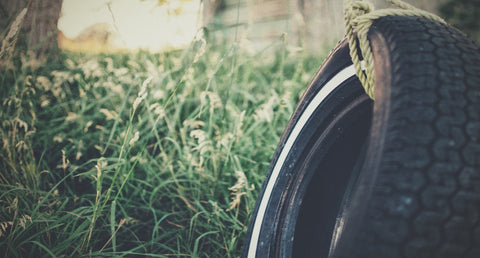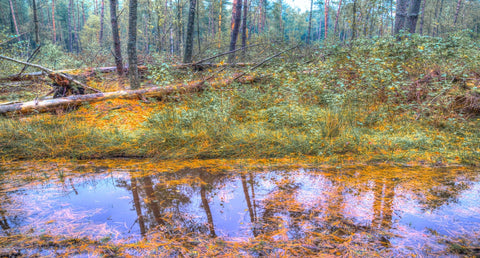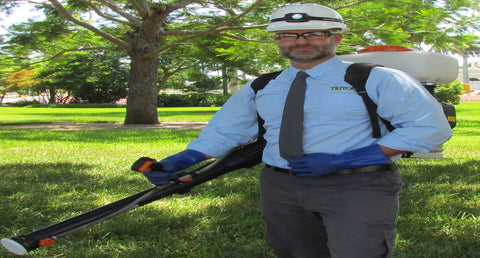How To Get Rid of Mosquitoes in Your Yard | 4 Step Guide
How To Get Rid of Mosquitoes in Your Yard...
Let's face it...mosquitoes suck...literally, and figuratively. All across the United States, mosquitoes wreak havoc on those wishing to enjoy the outdoors through the warmer months of the year. In more northern states, mosquito season may just be a few months long. Extending southward, the duration of the mosquito threat tends to expand to be several months long, even lasting all year in some parts of the country.
Historically, mosquitoes have proven to be one of deadliest animals ever to inhabit the earth. Still today, estimates suggest more than one million people die each year worldwide from mosquito-borne illnesses such as Malaria. Fortunately for those of us in the United States, the vast majority of these mosquito-related deaths occur in other countries. But the risk of exposure to mosquito diseases in this country remains a concern, with thousands of cases reported each year. West Nile Virus is the most commonly reported mosquito-borne illness in the United States, followed by malaria, dengue fever, and chikungunya. Cases of encephalitis are also documented annually in the U.S., as well as other mosquito-related diseases.
Beyond the risk of exposure to potentially life-threatening illnesses, the presence of mosquitoes has the capacity to render an environment either unpleasant or altogether unsuitable for human occupancy when mosquito populations advance in large numbers. While many local government agencies around the country execute targeted aerial mosquito treatments throughout the season, these efforts mostly provide limited effectiveness in designated areas for short periods of time. This limited effectiveness is due in part to the fact that most widespread aerial mosquito applications are intended to target live, adult mosquito populations in a given environment at the time of the mosquito treatment, and typically reach only a small percentage of the aggregate mosquito populations, and have little or no impact on immature stages of mosquitoes waiting to emerge.
So even though large-scale mosquito applications may be good from the standpoint that they are doing something to reduce or mitigate mosquito populations, you as an individual homeowner are unlikely to see improvements around your own property as a by-product of these applications. So what are you to do? What can you do on your own to improve the mosquito conditions around your own home and yard?
4 Steps to Mosquito Reduction
As a starting point, the purpose of any mosquito control program should begin with a realistic set of expectations. Whether you are inclined to hire a professional mosquito control company or are considering a do-it-yourself approach to mosquito control, many factors will impact to what extent you may be able to reduce the actual numbers of mosquitoes in your yard and for what duration that relief from mosquitoes may be enjoyed. Viewing your treatment plan as a mosquito abatement program as opposed to a mosquito elimination program will properly set your expectations to be to adequately assess the value and effectiveness of your treatments.
Step 1: Eliminate Mosquito Breeding Sites (Water)
 If it has the capacity to contain or collect 2 inches of water or more, remove it, replace it, or modify it. Mosquitoes need standing water to breed. The more standing water mosquitoes have access to, the greater the mosquito breeding potential will be, and vice-versa. Most advanced mosquito populations occur in areas in direct proximity to ample sources of standing water that create an ideal mosquito breeding habitat. Mosquitoes are weak fliers, mostly blown about by wind currents. So while adult mosquitoes may drift to some extent to environments beyond where they emerged from, the largest concentrations of mosquitoes will be in direct proximity to where they breed.
If it has the capacity to contain or collect 2 inches of water or more, remove it, replace it, or modify it. Mosquitoes need standing water to breed. The more standing water mosquitoes have access to, the greater the mosquito breeding potential will be, and vice-versa. Most advanced mosquito populations occur in areas in direct proximity to ample sources of standing water that create an ideal mosquito breeding habitat. Mosquitoes are weak fliers, mostly blown about by wind currents. So while adult mosquitoes may drift to some extent to environments beyond where they emerged from, the largest concentrations of mosquitoes will be in direct proximity to where they breed.
To reduce the likelihood of mosquitoes using your property to breed, start by eliminating all removable potential sources of standing water. This may include tarps, toys, furniture, tools, equipment, tires, pots, planter boxes, bird baths, and any other object that could conceivably collect water. If an object that could contain water cannot be removed or eliminating, consider options for rendering it unable to gather water, such as repositioning it or turning it over. Any permanent fixtures or remaining items that can collect water may need to be treated with a larvicide, as outlined in step 4 below.
Step 2: Eliminate or Reduce Mosquito Harborage
 Step 1 focuses on making sure your own property is not contributing to ongoing mosquito reproducibility. Step 2 seeks to eliminate, or at least markedly reduce, areas around your property where adult mosquitoes will be likely to hide or light.
Step 1 focuses on making sure your own property is not contributing to ongoing mosquito reproducibility. Step 2 seeks to eliminate, or at least markedly reduce, areas around your property where adult mosquitoes will be likely to hide or light.
During the heat of the daytime, most mosquito species spend their time in dark, shady areas such as within thick foliage, on the underside of eaves around a home, or in other areas protected from direct sunlight. The key here is to make your property as undesirable as possible for adult mosquitoes by limiting areas that they would consider favorable. Look to keep all bushes, trees, shrubs, and other foliage trimmed to as minimal an extent as possible, and eliminate piles of debris and other unnecessarily shady areas throughout the property.
Step 3: Treat the Unremovable Sources of Standing Water
 As you go through the process of eliminating all potential sources of standing water around your yard, you are certain to discover that some of these areas simply cannot be removed, eliminated, or corrected. Things such as knots in trees, dips or holes in the lawn, stagnate creeks or ponds, gutters or downspouts, and many other immovable things will remain as things that could potential gather water and turn into mosquito breeding sites.
As you go through the process of eliminating all potential sources of standing water around your yard, you are certain to discover that some of these areas simply cannot be removed, eliminated, or corrected. Things such as knots in trees, dips or holes in the lawn, stagnate creeks or ponds, gutters or downspouts, and many other immovable things will remain as things that could potential gather water and turn into mosquito breeding sites.
To combat these areas, mosquito larvicides or mosquito insect growth regulators such as Altosid Mosquito Larvicide can be applied in some of these areas. (Before applying any mosquito larvicide, be sure to check the label for approved use sites and application instructions). By treating remaining areas with the capacity to gather water with a mosquito larvicide, the water collecting will be rendered inhospitable for mosquitoes to complete their life cycle, generally preventing the larval or pupal stage from advancing into adulthood.
Most professional mosquito exterminators will incorporate mosquito larvicides into their mosquito abatement programs. Click here to find a professional mosquito company now.
Step 4: Treat the Adult Mosquito Populations
 Now that you have gotten rid of most mosquito breeding sites, reduced the mosquito harborage areas, and treated the remaining potential breeding sites with a mosquito larvicide, you can now turn your efforts towards getting rid of the adult mosquitoes around your yard that are causing so much anguish. There are many treatment options for controlling adult mosquito populations around your yard, each with their own advantages and disadvantages:
Now that you have gotten rid of most mosquito breeding sites, reduced the mosquito harborage areas, and treated the remaining potential breeding sites with a mosquito larvicide, you can now turn your efforts towards getting rid of the adult mosquitoes around your yard that are causing so much anguish. There are many treatment options for controlling adult mosquito populations around your yard, each with their own advantages and disadvantages:
Hire a Professional Mosquito Control Company
Professional mosquito exterminators have the tools, training, equipment, expertise, and products necessary to roll out an effective mosquito abatement program in short order. If you're looking to move quickly, start by consulting local mosquito professional in your area. Most professional mosquito treatment programs include consistent, periodic applications and predetermined intervals throughout the mosquito season to provide relief from biting mosquitoes all season long.
Install Mosquito Trap Devices Such as the Mega-Catch
There are a variety of mosquito trap devices available on the market, each based on certain combination of functionality. Among the most effective and reputable mosquito trap devices are the Mega-Catch Mosquito Traps. Easy to install and simple to maintain, these devices have been proven to markedly reduce mosquito populations in given in residential and commercial properties. When using mosquito traps of any type, trap device placement can be critical to achieving the desired results, so be sure to follow manufacturer recommendations for how many devices may be optimal for your particular property and where best to position the traps for optimal results. Mosquito traps can be used independently or in combination with other treatment measures.
Do Your Own Mosquito Spraying
Doing your own mosquito spraying can be a practical option for some people in some instances, but comes with a number of considerations. Most effective mosquito treatments are dependent upon having the proper mosquito application equipment, some of which can be cost-prohibitive. Backpack mosquito sprayers such as the Invatech Italia Mosquito Mister are designed to atomize the mosquito pesticide particulars in a way that provides maximal knockdown of adult mosquitoes at the time of application while enhancing the absorption and residual effectiveness following the application. The Repel Propane Insect Fogger is an easy-to-use handheld device that can be used for an immediate knockdown effect as well, with less of residual for ongoing protection.
Product selection is also important when doing your own mosquito treatments. Some mosquito pesticides may be formulated to provide for a more immediate knockdown, whereas others may provide better ongoing protection through a stronger, longer-lasting residual. Talstar P is a broad spectrum pesticide that provides excellent control of mosquitoes along with many other insects. Whichever product you choose, be sure that particular formulation is compatible with whichever application device you plan to use, and be sure to follow all application instructions on the product label.
For ongoing mosquito protection all season long, you should expect to perform your mosquito application at consistent, periodic intervals, usually every 2 to 4 weeks. The product label of the pesticide you choose will outline how often you should treat based on the concentration you choose to use.
Additional options for control of adult mosquitoes includes inline systems that integrate with your home's sprinkler systems and mosquito spray systems that are mounted on the underside of eaves and other strategic locations around the home, among many others. For additional support on mosquito control options, please check out our Ask Professor Pest Live Chat for immediate free support.

